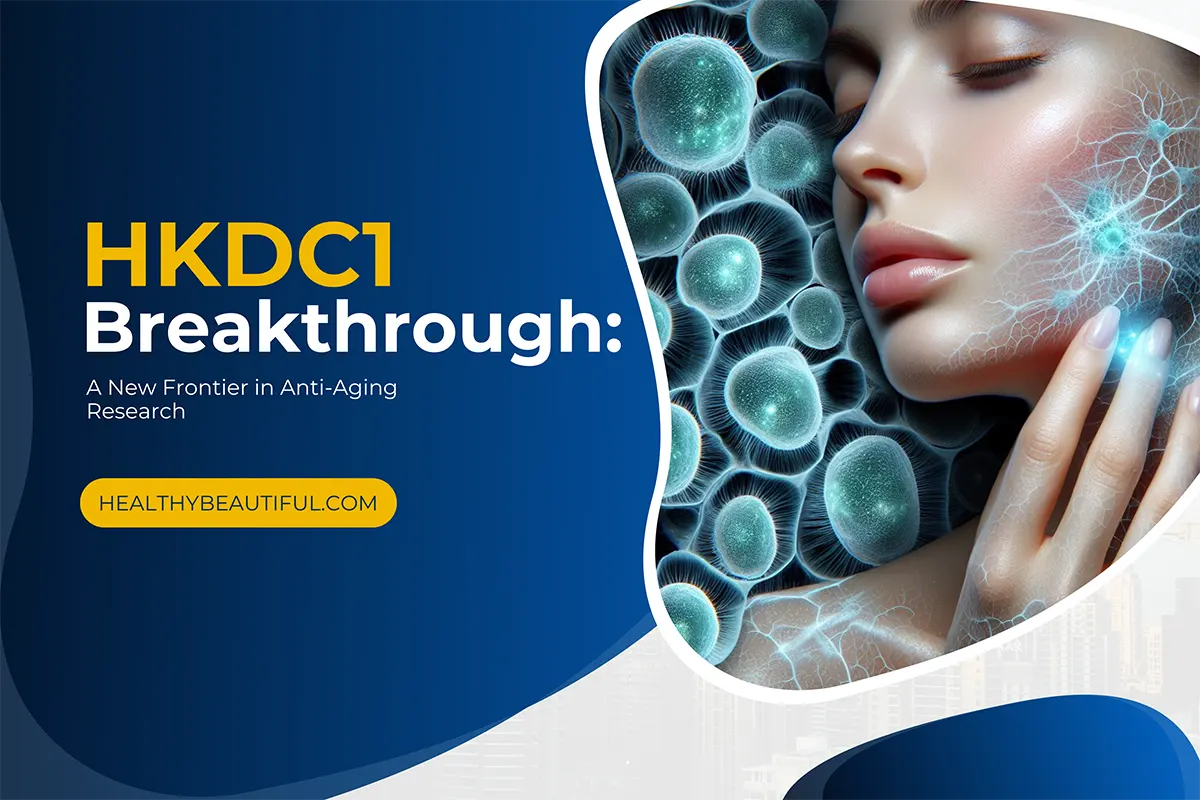Key Idea: Elevating the levels of HKDC1 can potentially enhance cellular well-being, slow down aging, and prevent age-related conditions. This discovery can pave the way for new treatments that may slow down the aging process and protect against age-related conditions.
Scientists at Osaka University in Japan have identified a protein that is connected to how cells maintain their health. This discovery could lead to new anti-aging treatments and remedies for age-related diseases. The study suggests that a new “fountain of youth” may be hiding inside our own cells.
Introduction of HKDC1 as a Key Protein
Cells are made up of tiny structures called organelles that perform specific functions. These organelles can be compared to specialized organs within the cell. For instance, mitochondria are known as the cell's powerhouse, while lysosomes act as the waste disposal system. The health of these organelles is critical to the overall well-being of the cell. Mitochondria produce the energy required for cell functions, while lysosomes break down waste to maintain cellular cleanliness. When both organelles are in excellent condition, the cell operates efficiently, contributing to our overall health.
However, despite the extensive research conducted in this area, there still needs to be a knowledge gap in understanding how cells regulate and maintain the balance of these crucial organelles. As a result, HKDC1, a newly discovered protein, has gained significance in unraveling some of the mysteries surrounding cellular organelles. Understanding the role of HKDC1 could fill the gaps in our knowledge about how cells keep their organelles in check. It is like discovering a key that unlocks doors to unexplored rooms. HKDC1 has emerged as a vital player in this area, and its exploration could provide a breakthrough in our understanding of cellular organelle regulation.
Link between Organelle Damage and Aging-Related Concerns
Cellular organelles like mitochondria and lysosomes are susceptible to damage over time, linked to aging-related concerns. As a result, it is critical to understand how the cells maintain the health and productivity of their organelles.
Previous research has identified a protein called TFEB that is involved in organelle maintenance, similar to a manager overseeing the health and productivity of the organelles. Further studies on its functions and interactions with newly discovered proteins like HKDC1 could be essential in understanding organelle maintenance and addressing aging-related concerns.
Significance of HKDC1 in Cellular Senescence Prevention
The research paper highlights the significance of HKDC1 in preventing cellular senescence, which is a biological process associated with aging. The findings suggest that HKDC1 is pivotal in maintaining cellular youthfulness by preventing senescence. Moreover, the study reveals that HKDC1 mediates contact between mitochondria and lysosomes, which has profound implications for cellular health. This contact facilitates communication between these two vital components, which is crucial for maintaining cellular balance and resilience.
Additionally, the study indicates that HKDC1 has therapeutic potential for age-related diseases. It emerges as a promising target for developing innovative treatments aimed at mitigating the effects of aging on cellular function. Overall, the study sheds light on the broader impact of HKDC1's functions, emphasizing its potential applications in preventing cellular aging and paving the way for novel therapeutic interventions targeting age-related diseases.
Implications for Dermatology and Cosmetic Formulation
These implications bridge the scientific findings to practical dermatology and cosmetic science applications, promising a more informed and effective approach to tackling aging-related skin challenges.
The study's findings on HKDC1 provide significant implications for dermatology and cosmetic formulation fields. Dermatologists can leverage the newfound understanding of HKDC1 to address aging-related skin concerns effectively. By understanding the role of HKDC1 in cellular health, dermatologists can develop strategic approaches to tackle skin aging issues.
Moreover, the understanding of HKDC1 could revolutionize cosmetic formulation. Cosmetic products can be crafted with precision, utilizing insights into HKDC1's functions to develop targeted solutions that preserve and enhance skin vitality. By bridging scientific findings to practical applications, these implications promise a more informed and effective approach to tackling aging-related skin challenges in both dermatology and cosmetic science.
Resources:
- Cui, M., Yamano, K., Yamamoto, K., Yamamoto-Imoto, H., Minami, S., Yamamoto, T., Matsui, S., Kaminishi, T., Shima, T., Ogura, M., Tsuchiya, M., Nishino, K., Layden, B. T., Kato, H., Ogawa, H., Oki, S., Okada, Y., Isaka, Y., Kosako, H., … Nakamura, S. (2024). HKDC1, a target of TFEB, is essential to maintain both mitochondrial and lysosomal homeostasis, preventing cellular senescence. In Proceedings of the National Academy of Sciences (Vol. 121, Issue 2). Proceedings of the National Academy of Sciences. https://doi.org/10.1073/pnas.2306454120
- Carmona-Gutierrez, D., Hughes, A. L., Madeo, F., & Ruckenstuhl, C. (2016). The crucial impact of lysosomes in aging and longevity. Ageing research reviews, 32, 2-12. https://doi.org/10.1016/j.arr.2016.04.009
- Deus, C. M., Yambire, K. F., Oliveira, P. J., & Raimundo, N. (2020). Mitochondria–lysosome crosstalk: from physiology to neurodegeneration. Trends in molecular medicine, 26(1), 71-88. https://doi.org/10.1016/j.molmed.2019.10.009
- Sardiello, M., Palmieri, M., Di Ronza, A., Medina, D. L., Valenza, M., Gennarino, V. A., … & Ballabio, A. (2009). A gene network regulating lysosomal biogenesis and function. Science, 325(5939), 473-477. https://www.science.org/doi/abs/10.1126/science.1174447




